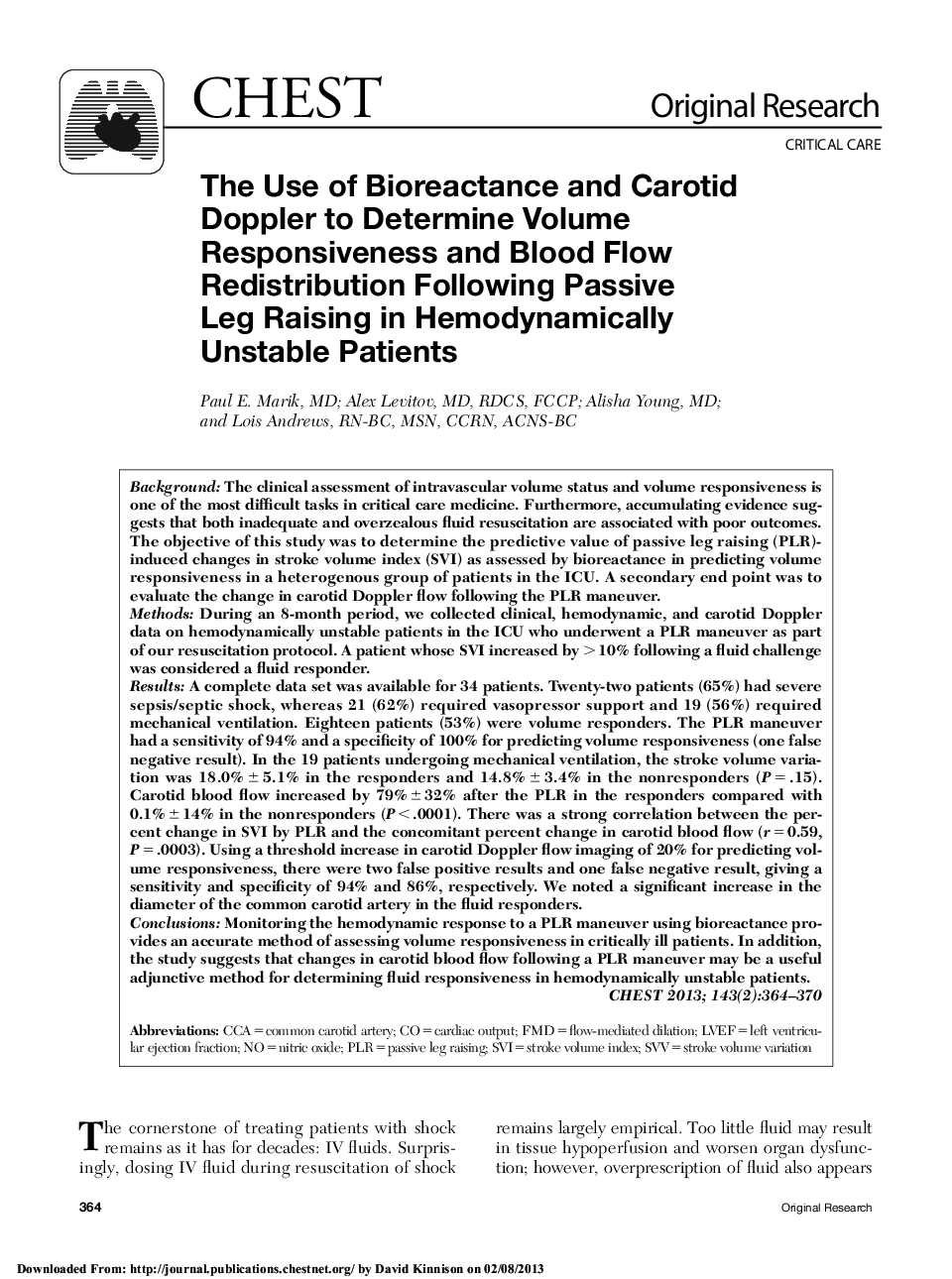| Article ID | Journal | Published Year | Pages | File Type |
|---|---|---|---|---|
| 5955858 | Chest | 2013 | 7 Pages |
BackgroundThe clinical assessment of intravascular volume status and volume responsiveness is one of the most difficult tasks in critical care medicine. Furthermore, accumulating evidence suggests that both inadequate and overzealous fluid resuscitation are associated with poor outcomes. The objective of this study was to determine the predictive value of passive leg raising (PLR)-induced changes in stroke volume index (SVI) as assessed by bioreactance in predicting volume responsiveness in a heterogenous group of patients in the ICU. A secondary end point was to evaluate the change in carotid Doppler flow following the PLR maneuver.MethodsDuring an 8-month period, we collected clinical, hemodynamic, and carotid Doppler data on hemodynamically unstable patients in the ICU who underwent a PLR maneuver as part of our resuscitation protocol. A patient whose SVI increased by > 10% following a fluid challenge was considered a fluid responder.ResultsA complete data set was available for 34 patients. Twenty-two patients (65%) had severe sepsis/septic shock, whereas 21 (62%) required vasopressor support and 19 (56%) required mechanical ventilation. Eighteen patients (53%) were volume responders. The PLR maneuver had a sensitivity of 94% and a specificity of 100% for predicting volume responsiveness (one false negative result). In the 19 patients undergoing mechanical ventilation, the stroke volume variation was 18.0% ± 5.1% in the responders and 14.8% ± 3.4% in the nonresponders (P = .15). Carotid blood flow increased by 79% ± 32% after the PLR in the responders compared with 0.1% ± 14% in the nonresponders (P < .0001). There was a strong correlation between the percent change in SVI by PLR and the concomitant percent change in carotid blood flow (r = 0.59, P = .0003). Using a threshold increase in carotid Doppler flow imaging of 20% for predicting volume responsiveness, there were two false positive results and one false negative result, giving a sensitivity and specificity of 94% and 86%, respectively. We noted a significant increase in the diameter of the common carotid artery in the fluid responders.ConclusionsMonitoring the hemodynamic response to a PLR maneuver using bioreactance provides an accurate method of assessing volume responsiveness in critically ill patients. In addition, the study suggests that changes in carotid blood flow following a PLR maneuver may be a useful adjunctive method for determining fluid responsiveness in hemodynamically unstable patients.
